Nestled in the lap of the Himalayas, Nepal is not just a land of snow peaks and old temples- it depicts a rich tapestry of culture and creativity. Art and handicrafts of Nepal have been expressing spiritual belief, cultural identity, and daily life for hundreds of years. From intricately woven textiles to hand-carved wooden idols, each piece tells a story that has evolved through generations and rooted deep in tradition. Those artisans work in small workshops, mostly in alleyways or village homes, employing techniques handed down through family lines. These are just objects; they are cultural legacies made up of hand and heart. Exploring the country of Nepal is a walk inside a living museum of artistry- the touchable masterpieces intertwining living history with contemporary times. Below is discussed about some Handcrafted art of Nepal.
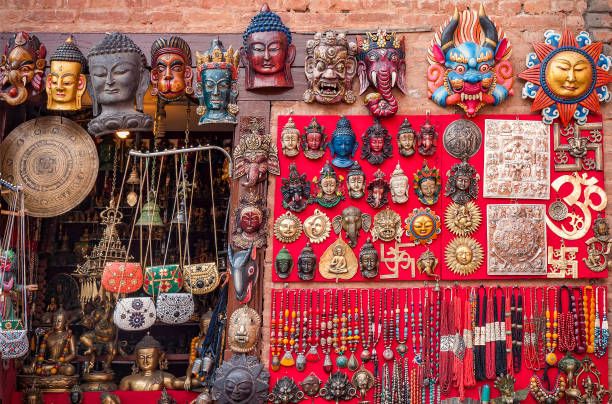
Above and beyond the superficial, Nepal’s art and crafts are deeply human in their function: they give identity to existence, nourish livelihoods, and establish communities. These traditional arts resist the onslaught of globalization while encasing narratives that would otherwise be left untold. A visit to any one of the artisan studios or open markets in Patan and Bhaktapur speaks of the hours of patience and love spent on each work. Traditionally, craftwork in Nepal is oftentimes communal in nature: grandparents will teach grandchildren, and neighbors will work side by side; thereby, reinforcing social bonds and cultural continuity. Organisations and cooperatives have also empowered women and marginalized communities through these arts, transforming heritage into hope. Through arts, Nepal does not merely exhibit its history; it shapes its future.
Top 7 Art and Handicrafts made in Nepal that are just amazing
The multi-materiality and multiplicity of styles with which handicrafts are made in Nepal remain important attractions. In the Kathmandu Valley alone one could encounter meticulous Thangka paintings, statues from metalwork that shimmer and shine, Mithila art works, and Newari wood carvings whose carvings converse tales from ancient Hindu and Buddhist manuscripts. Different regions, from the high mountainous settlements to the southern Terai, present unique interpretations of craft techniques and art forms, all of which draw heavily from local myths, seasonal festivals, and everyday rituals. The obvious use of natural dyes, hand-spun fibers, and wood sourced sustainably gives testimony to mankind’s respect for the environment and traditional subsistence living. A tourist usually leaves Nepal carrying a piece of handicraft not simply as a souvenir but as a memory of the soul of the culture. No wonder then that Nepali handicrafts find admiration across continents for their authenticity and spiritual resonance.
1. Thangka Painting: Sacred Art on Canvas
Thangka painting is one of the visually most stunning and spiritually rich art forms in Nepal. These are intricate scroll paintings, often embodying Buddhist deities, mandalas, or spiritual scenes used for purposes of meditation and religious ceremony. Traditionally painted on cotton or silk, Thangkas combine natural pigments, gold leaf, and the utmost diligence. Each symbol and color has a profound spiritual significance and takes years of training to master. The object is not just for decoration; they are sacred works, used by monks and practitioners for the cultivation of inner reality through reflection and prayer. Watching a Thangka artist at work is mesmerizing; with each stroke, precision embodies meditative state and age-old discipline.
The geometry and balance of the Thangka paintings add to their allure. Every figure is required to have been drawn according to strict spiritual proportions. A slight mistake would make the Thangka useless for ritual purposes. Generally, artists learn their art under a master for many years before setting out to compose their own Thangkas. Some paintings may take months to even up to a year to finish due to the intensiveness of the details involved. New-age Thangka artists also touch upon contemporary issues while holding on to old-fashioned techniques-a fusion of antiquity and modernity that will keep the traditional arts alive and meaningful.
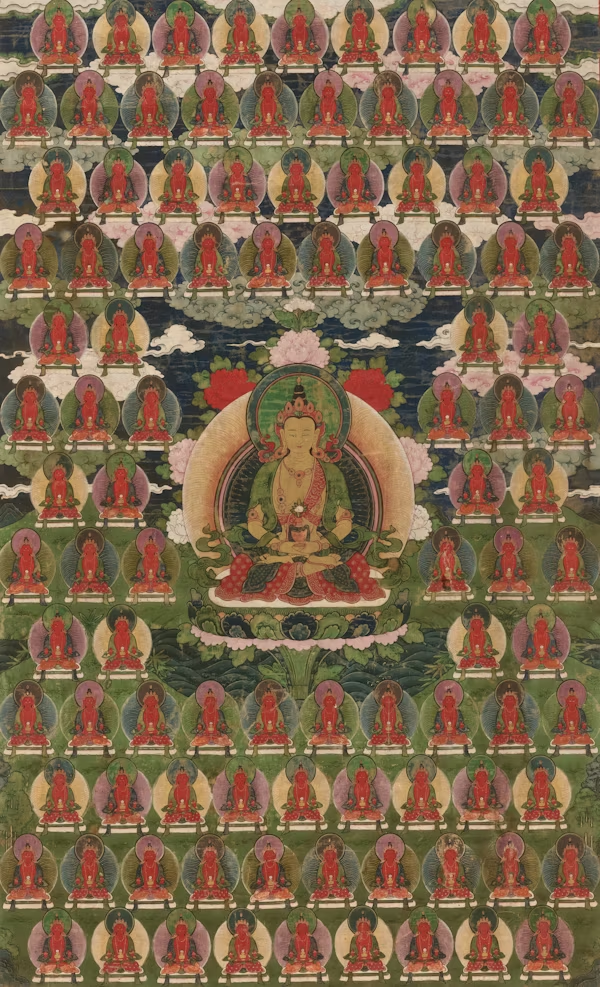
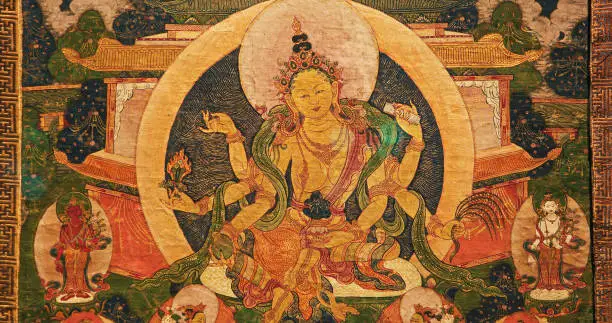
There are places like Boudhanath and Patan having Thangka galleries where artists invite you to come and watch their activity. Most of the tourists buy Thangkas for a spiritual keepsake, while some prefer to have personalized art pieces. These become wonderful hangings and are fine gifts with deep meanings. These are the embodiment of Himalayan spirituality and centuries of devotion. You will keep Thangka artists well and sustain a fragile but very powerful tradition. This beautiful experience touches both eyes and the soul.
2. Wood Carving: Carving the Spirit of Nepal
The phenomenally known wood-carving tradition of Nepal is manifest in the most exquisite architecture of temples, windows, and doors in the Kathmandu Valley. The Newar artisans have proved to be masters in such craft, phenomenally producing wonders using only a few tools and a lot of patience. A fine example of the talent of these genius artisans is Bhaktapur’s “Peacock Window”, what is more often than not referred to as “the Mona Lisa of Nepalese woodwork”. The carvings themselves hold great symbolic meaning-in many such carvings, the divine, mythic beasts, and geometric patterns are presented. It isn’t about mere beauty in temples; the carvings have even more profound purposes, that of being guardians of sacred space. Centuries old carvings are just as standing now and often tested as sure evidence of the long-lasting durability of material and tradition.
Wood Craving
Wood carving in Nepal cannot be confined to architecture. There are beautiful pieces of furniture, home décors, ritual objects like masks and prayer wheels that are sculpted in wood. Each piece, whatever might be its size, receives attention as an artistic effort and cultural thought. The source is mostly local; Sal and teak are the well-known species for their strong nature and grain. One can view their workshop in Patan and Bungamati and get hands-on insight into the woodwork where raw wood gets transformed into sacred art with a degree of grace and skill.

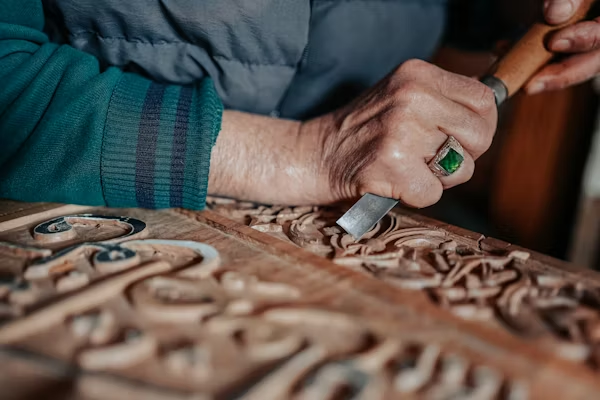
Also, this craft is a key player in conservation of Nepalese cultural identity. Restoration projects have revived interest in the craft in recent times and young artisans are again entering the field, building bridges between tradition and modern livelihood. So, when you buy a hand-carved product, you are supporting these artisans and their families in sustaining the existent art. The classic Nepali woodwork is something you own which becomes a small window into centuries-old spiritual and artistic heritage—an art that breathes history. There is the rhythm of the land seen in every line of carving.
3. Mithila Arts–A Colorful Language of the Terai
Mithila art belongs to the Maithil community of the southern Terai region; it is buoyant, a riot of color, and filled with life. Traditionally, it was painted by women on the walls of their homes for the expression of daily life, festivals, dreams, and worship. Bright natural colors made from flowers, clay, and charcoal come alive in this style of painting, instantly recognizable. Common themes include peacocks, fish, wedding ceremonies, and Hindu deities like Krishna and Lakshmi. The native charm and rhythmic visuals come alive through the symmetry and flat perspective. Mithila painting is really poetry for art, an age-old art of storytelling.
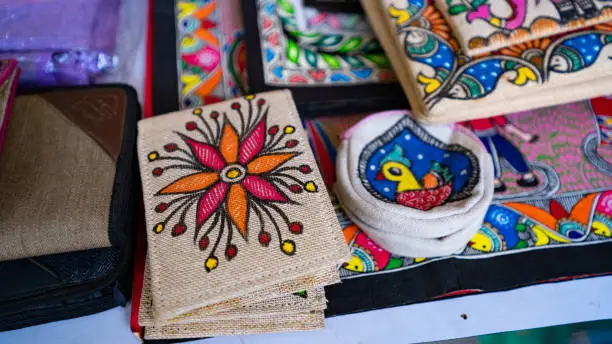
Today, Mithila art has transcended from mud-walled houses to places like canvases, notebooks, greeting cards, and clothing. These artists are being helped towards earning income and acquiring recognition while keeping their heritage intact through women cooperatives and non-governmental organizations. This transformation from keeping walls of homes to being appreciated globally provides empowerment for local communities, especially the women. After all, it becomes an analytical track to assist artists teaching others in the village. Tourists visiting the Janakpur region can take part in workshops and even create their art there. These are some experiences people connect directly with the artists and their stories.
Mithila art speaks without words: it reads love, joy, and spirituality within its lines and colors. It possesses, powerfully endurance among all forms of art, making it one of the most adored and easily available forms of art in Nepal. A piece of Mithila art buys rural women and sustains a legacy of beautiful culture. You will not only have a beautiful painting but also a small piece of somebody’s world. And every brushstroke comes with a sense of celebration. Mithila art really paints the heart of Nepal.
4. Metalwork: Sculpting Divinity in Bronze and Copper
Not only is Nepalese metalwork very good, but it is also in high demand around the world. It is especially famous for hand-cast statues of deities and ritualistic objects made for both Hindu and Buddhist traditions. Most of those artisans are Newars, who have learned the lost-wax technique quite well. The lost-wax process involves each piece being first carved in wax and then cast in metal (usually bronze, copper, or brass). These works are worship structures in temples and houses. They are not only beautiful but also spiritually significant. The statues are artistically created, paying great attention to the facial expressions, body posture, and hand gestures (mudras) so that what is depicted can capture both form and essence. Many of these are inlaid with gemstones, gilded, and, as always, the holding makes one feel the weight not only of metal but also of devotion and centuries of craftsmanship.
In addition to the deities, the artisans create singing bowls, prayer wheels, bells, and vajras, all of which are essential elements of ritual and meditation practices. The sound of this singing bowl resonates in the air, bringing the soothing presence of Nepalese spirituality.
The Process
In places like Patan and Thamel, one could see how visitors would catch the handiwork of these artisans using small tools and torch light to create the fine detailing of every piece of work. Watching molten metal slowly take the form of a statue is like watching a sacred birth-it is mesmerizing. A number of artists nowadays change their work towards more modern or abstract forms; thus keeping the tradition dynamic. And, of course, at the heart of the craft always lies deep-rooted and spiritual Nepal.
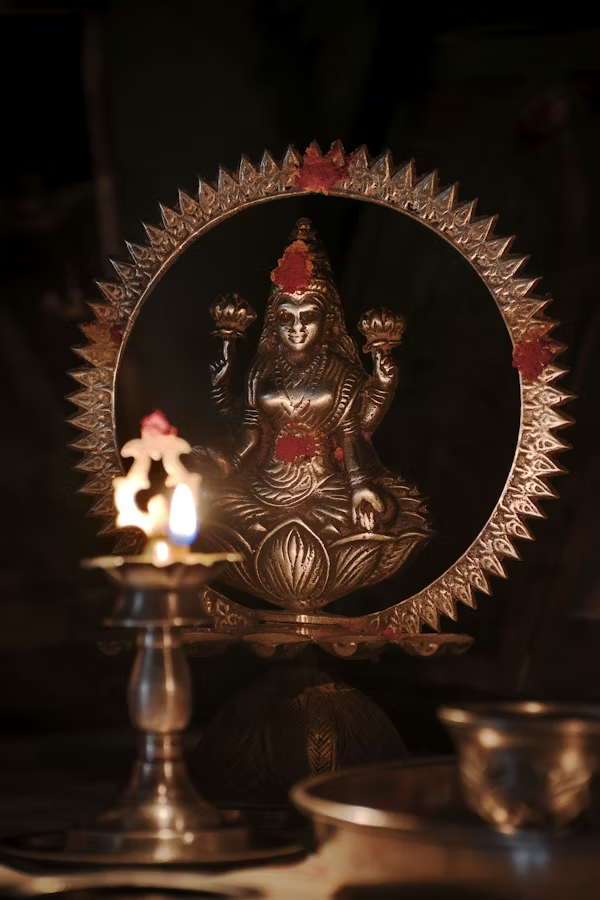

The first step is learning; the second step is understanding; and the third step is controlling one’s mind. From that point on, the mind is the master; it can make or break any achievement. It can also create problems for partnership, break family ties, bring down governments, and so on. Everything can become fruitless without controlled thoughts. Thus, never allow anyone’s or anything’s words to control your mind.
5. Pottery: Earth, Fire, and Heritage in Hand
The craft of pottery is one of the oldest and the most unassuming yet so undeniably beautiful crafts in Nepal, laying a firm foundation in the daily lives of people and traditions. The ancient city of Bhaktapur, along with its Pottery Square, is especially renowned for its artisans who shape clay into water jars, lamps, and sacred ritual vessels. Potters gracefully and rhythmically use simple kick-wheels and their hands to mold the earth before their eyes. This whole scene of watching them work gives an impression that it is timeless, unchanged from centuries. After being shaped, clay objects dry in the sun before being fired in open kilns. The feel of rustic finished products imparts a raw connect with the earth.
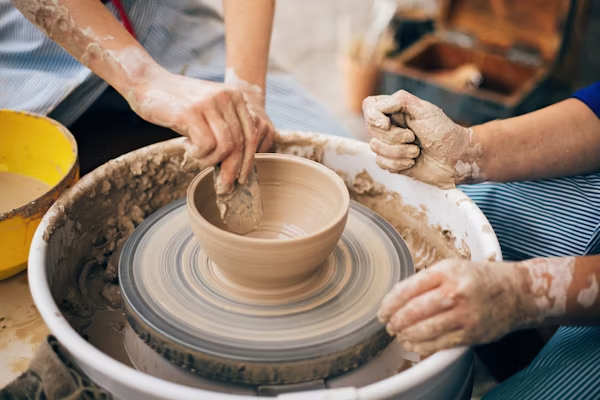
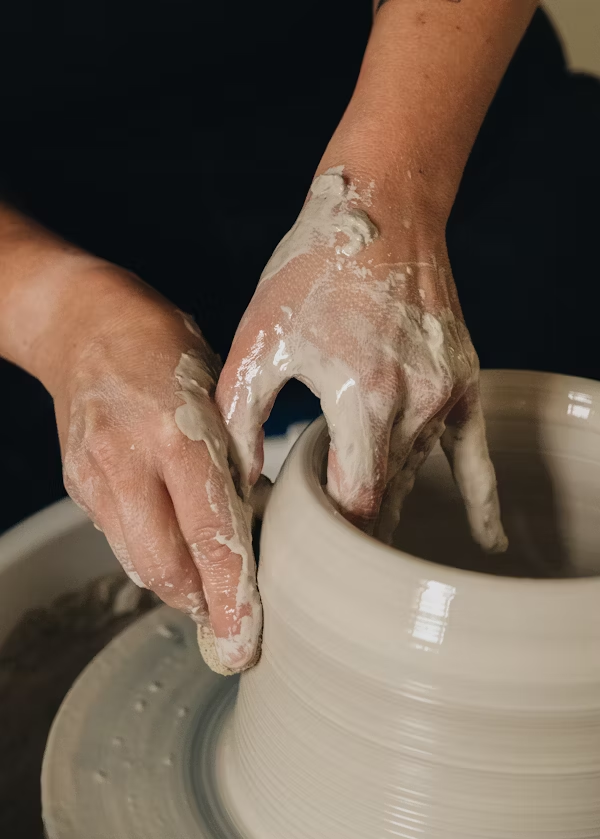
Pottery Arts
Nepali pottery is not simply utilitarian; it is imbued with symbolic and religious meanings. Lamps used during Tihar (Festival of Lights), or water pots employed within temples, have their designs and functions accordingly specified. Some artisans carve the designs on the wares or paint them with motifs-on top of these representational functions. The past few years have seen designers mixing traditional potting techniques with a modern flavor to give products appeal for buyers, local and foreign alike. Due to this integration, workshops around Bhaktapur currently welcome visitors to try their hand at clay shaping, leading to unforgettable experiences that ground them in the present. There is a certain warmth that comes to one’s heart watching wet earth spin under one’s hands.
It’s a cycle from mother earth to the object, from use to reuse, and finally again return to earth. It reminds us of beauty through simplicity and the importance of keeping natural handmade traditions alive. A piece of Nepali pottery is akin to taking a part of soil, history, and soul from Nepal to one’s home. Precious yet common items become almost invisible art. The pot is confectioned under a potter—steady hands, a creative heart, and a heritage that continues to endure. The act of making potteries in Nepal is not a craft but a relation itself.
6. Handmade Textiles: Weaving Culture into Cloth
Nepal’s textile tradition is as variegated as its people. Unlike ‘Nepalese’ or ‘Himalayan’, it is not an abstract cultural representation at unity together. Diverse ethnic groups have contributed their unique weaving and dyeing practices to this tradition-from the Dhaka fabric of the Limbu and Rai communities, to yak wool shawls from the upper Himalayas. Fine, handmade textiles still contain their history, their identity and pride. The most iconic is Dhaka: bold geometric patterns that enjoy a tradition of use in making traditional hats (topi), shawls, and saris. Each pattern has its own meaning, generally passed from generation to generation of weavers. The whole process is purely manual and carried out using backstrap or wooden looms, demanding an intense level of attention and skill. These fabrics don’t just wear but are rejoiced in festivals and ceremonies.
Textile Works : Its Advantages
Also, textile works are given an important economic and social nature in most communities involving the women. Different fabrics are spread over women’s cooperatives all over Nepal, training and employing weavers for economic independence while holding the line of traditional designs. Fiber types include cotton, hemp, and wool, and are dyed mostly with plant-based or mineral dyes. These are soft, durable yet environmental friendly to make a popular choice for scarves, home decor, and fashion. One of the interesting aspects of this is that these items also find their end users in tourists who come to Pokhara and Tansen, who buy them for themselves as well as culture souvenirs. Each such item carries a warmth that machine-made items simply do not replicate.
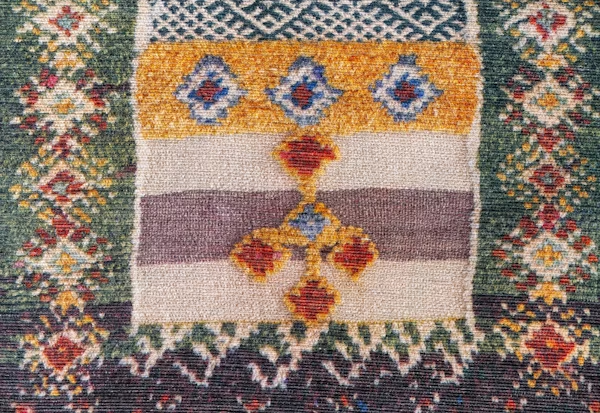
The Nepali textile is an amalgam of beauty, utility, and heritage. The detail and cultural significance are apparent, whether in the simple shawl or the ceremonial dress. When you wear or gift a handwoven item from Nepal, you share a piece of someone’s art, culture, and care. This is not fast fashion; these are slow, intentional, and sustainable. These things tell a story in every thread. And through these threads, the identity of Nepal finds its way into the world.
7. Lokta Paper Craft: Handmade from the Himalayas
This paper is a remarkable and eco-friendly Nepali craft made from the inner bark of the Lokta bush with a high-altitude habitat in the Himalayas. Lokta is handmade, tree-free, and durable, unlike ordinary paper; it has an unparalleled strength against water, tearing, and insect damage. In fact, even from centuries of use, it preserves holy writing and legal papers, many of which have survived for over 500 years. The process involves boiling the bark, pounding into sulci, and spreading the sulci to sheets where they will be dried under the sun. The result is rich-textured paper, alive in itself when flute in the palm. It is one of Nepal’s most sustainable and unique crafts.
Today it is a paper that sells in amazing products: Helps you journal, make lampshades, gift wrap, make photo albums, greeting cards, and even add a little activity to a prayer flag. Artisans generally tend to embellish their own preference made by block prints, pressed flowers, or hand-painted motifs. This makes every one of them unique.
The Process
The paper is an object of beauty, but it is also a mean of livelihood shared and harmonious relations with nature as its production benefits the local economies as well as forest conservation. Many cooperatives produce Lokta paper while empowering women and other marginalized communities in rural areas. People can visit Lokta paper-making workshops around the Kathmandu region and even take part in making paper. It is a great way to experience how art and nature blend with heritage.
To possess Lokta paper merchandise is to hold a bit of the Himalayan earth and sky within one’s hands. Each item feels unique, intentional, and soulful—best for gifting or individual use. In an age of technology, nothing has retained such a rare beauty as texture and authenticity: texture because this is handmade especially with much care and wisdom to connect people to history and present. The idea of buying Lokta paper products is to support artisans producing it because it is indeed beyond shopping; it is art that gives homage to people as well as the planet. Within every page, there is a whisper of the mountains.
Conclusion
Nepalese artisans craft stories through their art, blending beauty with deep cultural meaning. Thangka painters use sacred strokes to express devotion. Potters shape clay into elegant forms with skilled hands. Each piece reflects the heart and soul of its maker. These crafts preserve heritage and empower communities. They provide sustainable income as the modern world races forward. Ancient methods teach us the value of slowness and intention. Exploring Nepal’s handicrafts reveals the core of its culture. Travelers, collectors, and admirers connect through these handmade treasures. Every creation carries a piece of Nepal worth cherishing.

